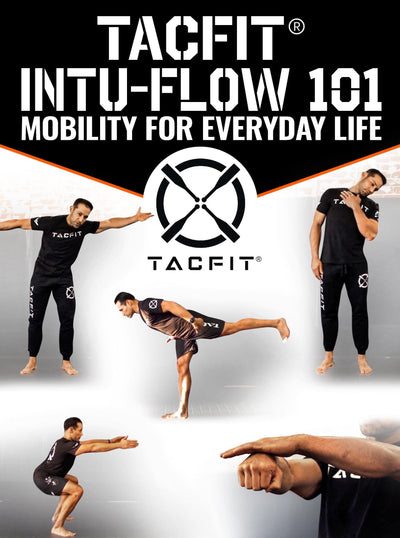Kettlebell Walking Lunge
In the realm of fitness, there are certain exercises that stand out for their ability to work multiple muscle groups, challenge stability, and enhance overall strength. One such exercise is the kettlebell walking lunge. Combining the benefits of lunges with the added resistance of kettlebells, this exercise offers a unique and effective way to improve lower body strength, stability, and coordination. In this blog post, we will explore the kettlebell walking lunge and why it deserves a place in your fitness routine.
What this article covers:
- Activation of Multiple Muscle Groups
- Increased Stability and Balance
- Enhanced Functional Strength
- Core Engagement and Postural Benefits
- Versatility and Progression
- Kettlebell Lateral Lunge
- Kettlebell Curtsy Lunge
- Kettlebell Overhead Lunge
- Kettlebell Goblet Walking Lunge
- Muscles Worked in Kettlebell Lunges
Activation of Multiple Muscle Groups
The kettlebell walking lunge is a compound exercise that engages several major muscle groups simultaneously. As you perform the lunging motion, your quadriceps, hamstrings, glutes, and calves are all recruited to work together. Additionally, the muscles in your core and upper body are also activated as they assist in stabilizing the kettlebell(s) during the movement. This comprehensive engagement of muscles makes the kettlebell walking lunge a highly efficient exercise for full-body strength development.
Increased Stability and Balance
One of the key benefits of the kettlebell walking lunge is its ability to challenge and improve stability and balance. Unlike traditional lunges, which are stationary, the walking lunge requires you to maintain control and balance as you move forward. This dynamic movement forces your body to adapt and stabilize itself with each step, thereby enhancing your proprioception and overall balance. Improved stability and balance not only contribute to better athletic performance but also help prevent injuries in daily activities.
Enhanced Functional Strength
Functional strength refers to the ability to perform everyday activities efficiently and with ease. The kettlebell walking lunge is a functional exercise that mimics movements often encountered in daily life, such as walking, stepping, and lunging. By incorporating these natural movement patterns with added resistance, this exercise helps build strength that can directly translate into improved performance in various activities, such as climbing stairs, carrying groceries, or participating in sports.
Core Engagement and Postural Benefits
While the kettlebell walking lunge primarily targets the lower body, it also places significant demands on the core muscles. As you hold the kettlebell(s) at your sides or in a racked position, your core muscles are activated to maintain proper alignment and stability. Consistent practice of this exercise can lead to improved core strength and postural alignment, reducing the risk of lower back pain and promoting a more upright and confident posture.
Versatility and Progression
The kettlebell walking lunge offers versatility and room for progression, making it suitable for individuals of various fitness levels. Beginners can start by practicing bodyweight walking lunges to master the proper form and coordination. As proficiency improves, incorporating kettlebells of varying weights can provide an additional challenge. Furthermore, adjusting the distance, speed, or incorporating other variations such as overhead kettlebell lunges or lateral lunges can further intensify the exercise and target different muscle groups.
Kettlebell Lateral Lunge
The kettlebell lateral lunge is a fantastic exercise for targeting the muscles of the lower body, particularly the inner and outer thighs. By adding a lateral movement to the traditional lunge, this exercise engages the adductor muscles, including the adductor magnus, adductor longus, and adductor brevis. It also activates the glutes, hamstrings, quadriceps, and calves. The kettlebell held in front of the chest adds resistance and challenges the upper body as well, making it a complete full-body exercise.
Kettlebell Curtsy Lunge
The kettlebell curtsy lunge is a variation of the traditional lunge that places a greater emphasis on the gluteus medius and gluteus minimus muscles. As you step back and across with one leg, mimicking a curtsy motion, these muscles are engaged to stabilize and support the movement. Additionally, the exercise targets the gluteus maximus, quadriceps, hamstrings, and calves. Holding a kettlebell in the goblet position or by the sides adds an extra challenge to the upper body and core muscles.
Kettlebell Overhead Lunge
The kettlebell overhead lunge is an excellent exercise for building shoulder stability, core strength, and overall body control. By holding a kettlebell overhead with a straight arm, you engage the deltoids, trapezius, and the muscles of the rotator cuff to maintain stability. As you perform the lunge, the lower body muscles, including the quadriceps, hamstrings, glutes, and calves, are also activated. This exercise not only strengthens and stabilizes the upper body but also improves balance and coordination.
Kettlebell Goblet Walking Lunge
The kettlebell goblet walking lunge combines the benefits of the goblet squat and the walking lunge. By holding a kettlebell at chest level with both hands, you engage the muscles of the upper body, particularly the biceps and upper back. As you perform the walking lunge, the lower body muscles, including the quadriceps, hamstrings, glutes, and calves, are targeted. This exercise challenges stability, enhances core strength, and promotes overall lower body development.
Muscles Worked in Kettlebell Lunges
The muscles worked Kettlebell lunges, regardless of the variation, primarily target the muscles of the lower body. The quadriceps, located on the front of the thighs, are heavily engaged in extending the knee during the lunge. The hamstrings, situated on the back of the thighs, work to stabilize the knee joint and assist in hip extension. The glutes, including the gluteus maximus, medius, and minimus, are activated to drive the hip extension and maintain stability. Additionally, the calves and muscles of the lower leg contribute to ankle stability and control during the movement. Depending on the variation of the kettlebell lunge, other muscles such as the core, upper back, shoulders, and arms may also be involved to provide stability and support.
The kettlebell walking lunge is a highly effective exercise that deserves a place in your fitness routine. Its ability to activate multiple muscle groups, improve stability and balance, enhance functional strength, engage the core, and offer versatility make it a valuable addition to any workout program. However, it is important to start with proper form and gradually increase the intensity to avoid injury. Whether you are an athlete, a fitness enthusiast, or someone looking to improve overall strength and stability, incorporating the kettlebell walking lunge can bring you closer to your fitness goals. So, grab a kettlebell, step forward, and stride towards a stronger and fitter you!
Did you find the blog beneficial? If so, consider exploring our other guides.
- Kettlebell Lunges
- The Kettlebell Side Lunge
- The Kettlebell Reverse Lunge
- Kettlebell Lunge Press
- Kettlebell Hip Thrust
- Kettlebell Thruster
- Kettlebell Squat Thrust
- Kettlebell Thrust
- Banded Kettlebell Hip Thrust
- Kettlebell Row
- Kettlebell Upright Row
- Renegade Rows with Kettlebells
- Kettlebell Gorilla Rows
- The Kettlebell Ballistic Row
- Kettlebell Snatch Muscles Worked





